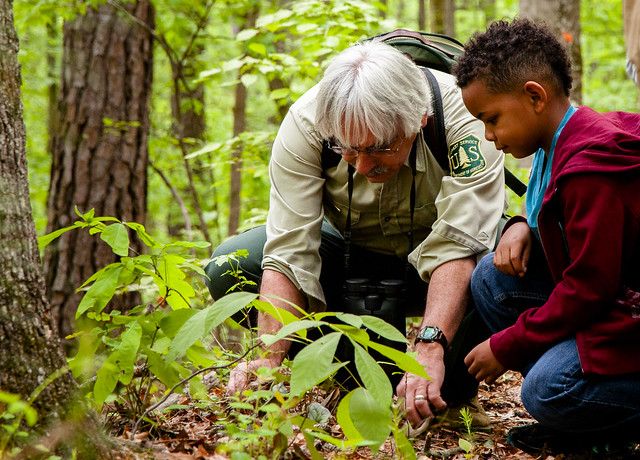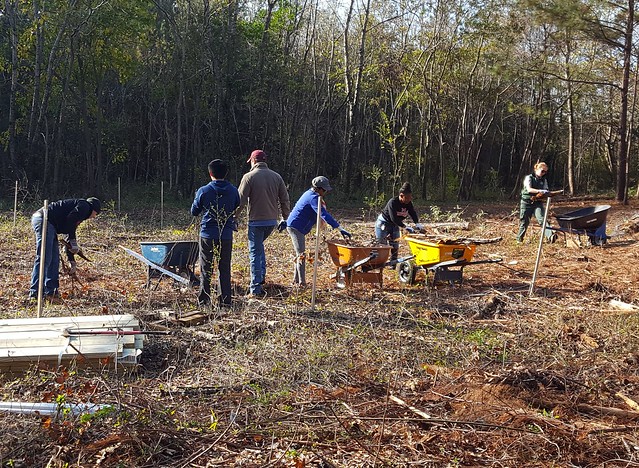
The USDA Forest Service Community Forest and Open Space Conservation Program (CFP) partners with local governments, Indian tribes, and qualified nonprofit organizations to acquire and protect forestlands that are important for people and the places they call home.
In 2016 the Atlanta, Georgia mayor’s office requested CFP funding to establish an urban food forest on seven acres in southeast Atlanta. This project was conceived as part of a larger strategy to address food deserts, or low-income areas that lack fresh whole foods due to the absence of grocery stores. According to data from USDA’s Economic Research Service, 22.3% of the Atlanta Metropolitan Statistical Area’s population lives in census tracts that are low income and have low access to a supermarket, supercenter or large grocery store.

To support this pilot program, CFP provided 50 percent of the funds, approximately $86,000, to reduce the food desert in the Lakewood-Browns Mill community, where more than a third of the population lives below the poverty line. This investment enabled the community to simultaneously preserve and utilize land that is culturally and historically significant.
Residents still talk about the land’s former owners, who left excess produce from their farm on fence posts for neighbors to claim and enjoy. Now this land will celebrate that history and make new memories for the community.
The Forest Service Cooperative Forestry and recreation staff worked alongside Atlanta’s Urban Agriculture Director to help create a Community Vison Plan that explores the questions: “What is a food forest? What could be on our food forest? What should be on our food forest?” The enthusiastic local response led to strong ties between the government agencies involved and residents. During 2017, the neighborhood came together for multiple volunteer events and festivals to restore forested and stream-side areas, picnic sites, trails, and the community garden area.
This community forest utilizes agroforestry--agriculture that combines trees and shrubs with agricultural uses to create more healthy and productive land. The site already has a pecan orchard, black walnut trees, muscadine grapes, and fruit-producing blackberry brambles on site. This spring, the community will honor the local heritage by adding pawpaw trees that are native to the area.
Members of the Atlanta Public Schools Farm-to-School program are eager to incorporate this asset as an educational site. Students from two area schools within walking distance of the food forest have already shared their vision for what they would like to see grown there, with blackberries and grapes being the favorites.
An innovative resource that communities can tap to learn about the benefits of urban forests and how to build out robust urban and community forestry projects is the Vibrant Cities Lab. A product of the Forest Service’s Urban and Community Forestry program, this innovative, multi-faceted web platform can help professionals, policymakers, planners, and the public access the best available science, understand the value of investing in urban and community forests, and take concrete steps to build better, more effective, and efficient urban and community forestry programs.

